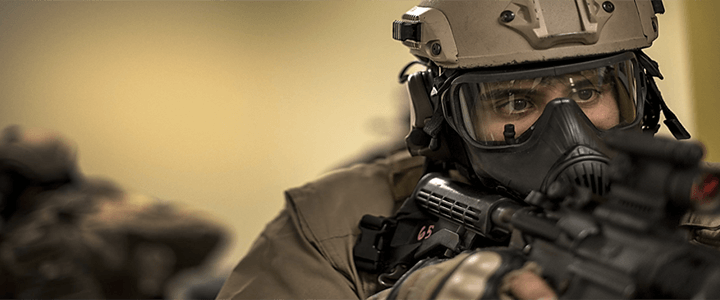Secretary of Defense James Mattis made an unannounced trip to Afghanistan Wednesday, flying into Hamid Karzai International Airport in Kabul for a meeting with Afghan Prime Minister Ashraf Ghani and NATO Secretary General Jens Stoltenberg. It didn’t take long for word to get out.
While Mattis was at the presidential palace, Taliban fighters attacked the airport with mortars and suicide vests, setting off a daylong battle with Afghan security forces that ended with a U.S. airstrike that accidentally killed civilians. Apparently, ISIS claimed responsibility, too, but that’s what they do. In other words, Wednesday in Kabul.
In a press conference, Mattis and Ghani extended yet another olive branch to the Taliban. “I want to reinforce to the Taliban that the only path to peace and political legitimacy for them is through a negotiated settlement,” Mattis said. for his part, Ghani said he remains open to peace talks.
we won’t fight our way out of this
Realistically, negotiated settlement is the only way this war is ever going to end. After 16 years of fighting, it’s painful but necessary to admit that we’re not any closer to “victory” than before, if for no other reason than we have never truly defined what victory looks like. I have always told people that victory in Afghanistan doesn’t mean the Taliban surrender, it means that the Afghan government builds the capacity to self-govern. A large portion of that capacity means being able to maintain their own security, ensuring that the country never again serves as a base of operations for attacks against the United States, or any other country.
The cold truth is that military victory against an insurgent group like the Taliban is virtually impossible. The Colombians never truly defeated the FARC. The British never truly defeated the IRA. And the Israelis never truly defeated the PLO. Whatever measure of peace these countries have found has come through the negotiating table.
Negotiation need not mean surrender. But it does mean that one must first admit that the insurgent isn’t evil incarnate and has at least some legitimate grievances. And more importantly, one must plan for peace as diligently as one plans for war.
DDR: planning for the peace
The process is known as Demobilization, Disarmament, and Reintegration. Without a well planned DDR process, the peace will be more unmanageable than the war.
Demobilization and disarmament are fairly straightforward. Militias must be disbanded and their weapons secured. Reintegration is the tricky part. After the cessation of hostilities, all those former insurgents must be put to work. Without meaningful work, they will inevitably revert to what they have grown to know best: war and lawlessness.
But finding work for former fighters in a country as poor as Afghanistan poses a monumental challenge. The country barely has work for civilians, let alone for former fighters. Let’s not even begin to discuss the opium problem.
I don’t pretend to have the answer to this quandary. As a Civil Affairs officer, I worked on the first version of Afghan DDR in 2004, and it never went anywhere. Forgiveness, a necessary element of a negotiated settlement, isn’t a particularly strong trait among Afghans. The person who cracks that code will deserve the Nobel Peace Prize.
But I can tell you that it’s necessary. I don’t want my 13-year-old son (born between deployments one and two) to be negotiating in the same places, with the same people, that I was. Retirement must be making me soft.




